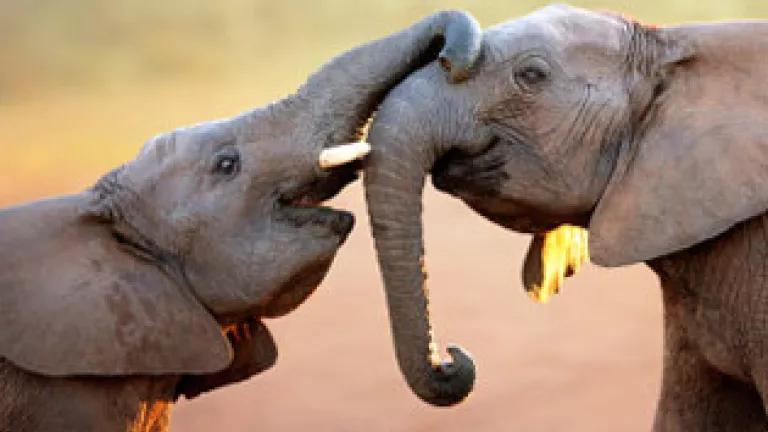
A month ago, on the eve of a visit by Prince William and in the face of continued poaching of elephants throughout Africa, China made an announcement: for the next year it would ban the import of all ivory carvings. The one-year ban was formally confirmed a week later and official notice of the Chinese decision was distributed to all parties to the Convention on International Trade in Endangered Species (CITES).
Several conservation groups were less than enthusiastic about China's move, some calling it nothing more than "window dressing." We disagree.
To be sure, banning the import of carved ivory will not solve the problems created by China's domestic ivory market, which is driven by high demand for ivory and supplied, in part, by the release of raw ivory from government stockpiles. But the fact that any sort of ban was put in place should not be underestimated.
China's announcement was the first recognition by the government that restricting the legal trade in ivory products may be needed to save the world's elephant populations. Indeed, just last week, China announced that it would be taking further management steps to conserve elephants. The statement, made at the International Conference on Illegal Wildlife Trade in Kasane, Botswana, is another sign that China has recognized that reform of its ivory regulations is needed.
Moreover, a quick analysis of reported ivory imports into China over the last few years suggests that China's import ban could be a more important on-the-ground step than is supposed. To understand the practical effect of China's new ban, you first need to understand that, in general, CITES allows international trade in protected species for what it deems to be "non-commercial" purposes. That is, the global "ivory trade ban" only really applies to trade for commercial purposes, meaning exports and imports for the express reason of selling those goods in the marketplace. Bringing a specimen from a CITES-listed plant or animal with you when you move from one country to another, or bringing home a small keepsake from a vacation, or hunting an animal and bringing home the taxidermied carcass - these are all considered "non-commercial" purposes for trade, and are more or less OK under CITES rules. And this exception allows quite a bit of ivory to move, legally, though the world market in small and not-so-small amounts. "Non-commercial" trade in ivory carvings is also specifically allowed from Namibia and Zimbabwe under CITES rules.
According to CITES data, thousands of kilograms (or many tons) of ivory are being imported into China as "hunting trophies" or as "personal effects," like tourist souvenirs. Some instances of trade are fairly clearly legitimate - one ivory carving here, a few grams of cut ivory there - but others are much more suspect. And, the vast majority of imports are coded "W," meaning they are sourced from wild elephants, and are mostly from one country: Zimbabwe.
CITES trade records aren't kept in a standardized unit of measurement (some are by weight, some are by number if specimens, etc.) so it's hard to quantify exactly how much ivory is being imported into China legally. But some reports are given by weight, and some of those weights are fairly staggering. One record was for more than 3,000 kg of ivory carvings imported to China from Zimbabwe. Now what would someone do with 3 metric tons of ivory trinkets? If we can say an average tusk weighs 50 kilograms, then that's about 40 tusks, roughly 30 elephants, all coded as "personal effects."
If any of this ivory is making it's way into commerce, then it becomes illegal ivory trade in China and part of the problem. Thus, the new ban could be a way for China to fill a gap in enforcement and choke off one potential method of supplying illegal markets with ivory.
Much more work must be done in China, the United States, Europe, and around the world to end the poaching crisis. This includes targeted and effective efforts to change ivory purchasing behaviors among consumers, as many of our conservation colleagues have noted. But revising the law and regulations that governs ivory sales is also a crucial part of the solution. China's ban on carved ivory imports is a good step in the right direction, and the announcement that it will take further management actions is another important sign of progress to come.

